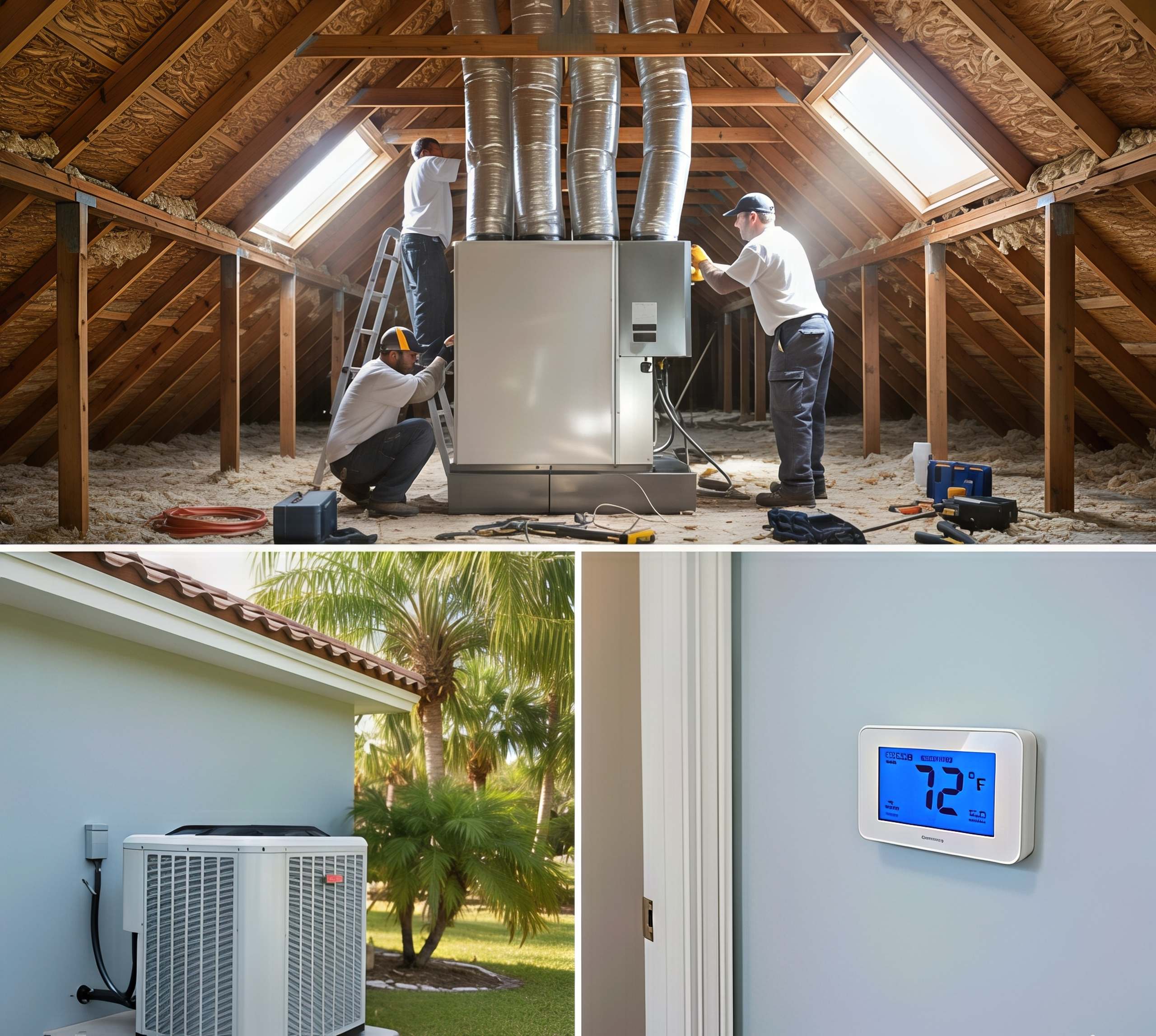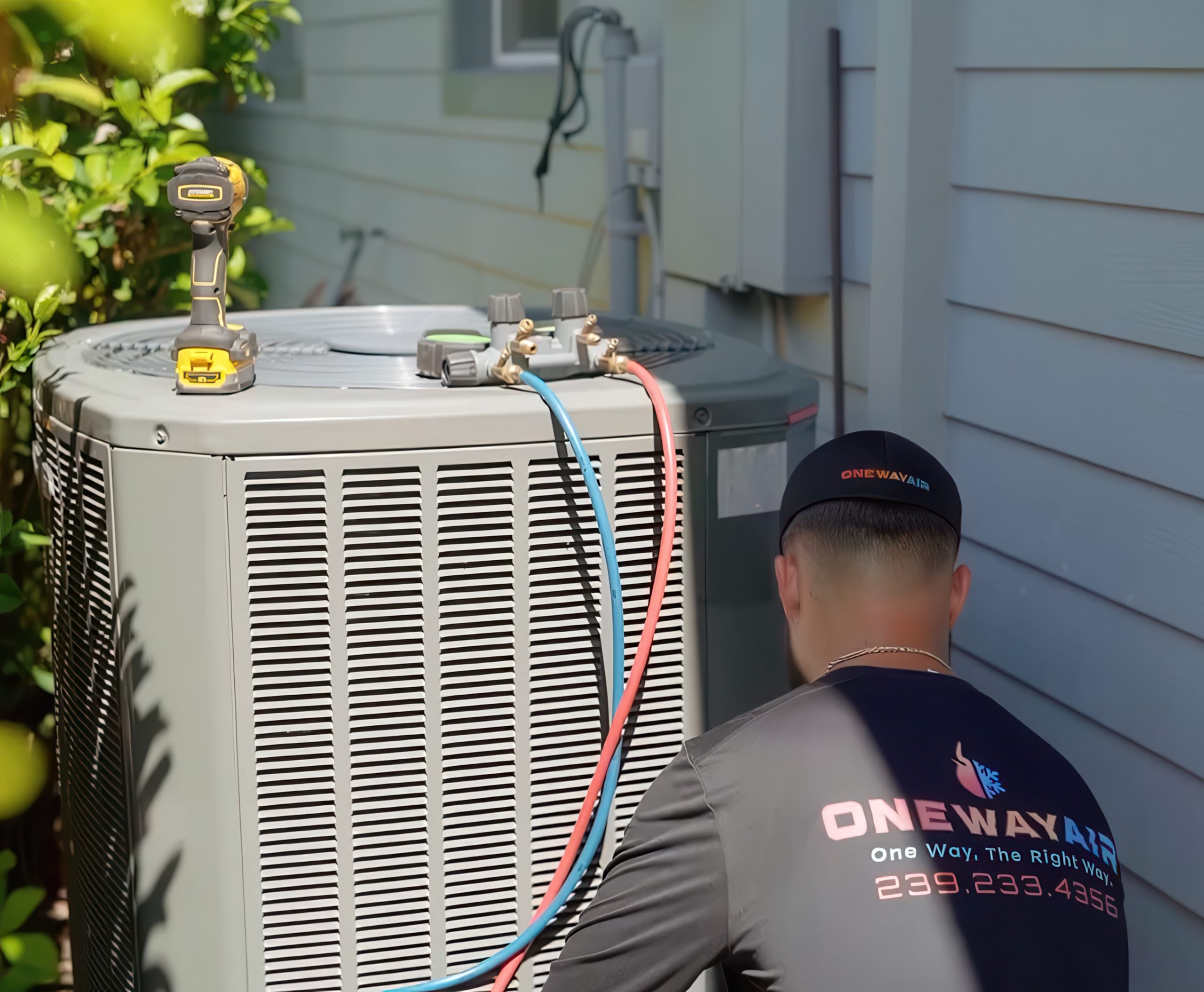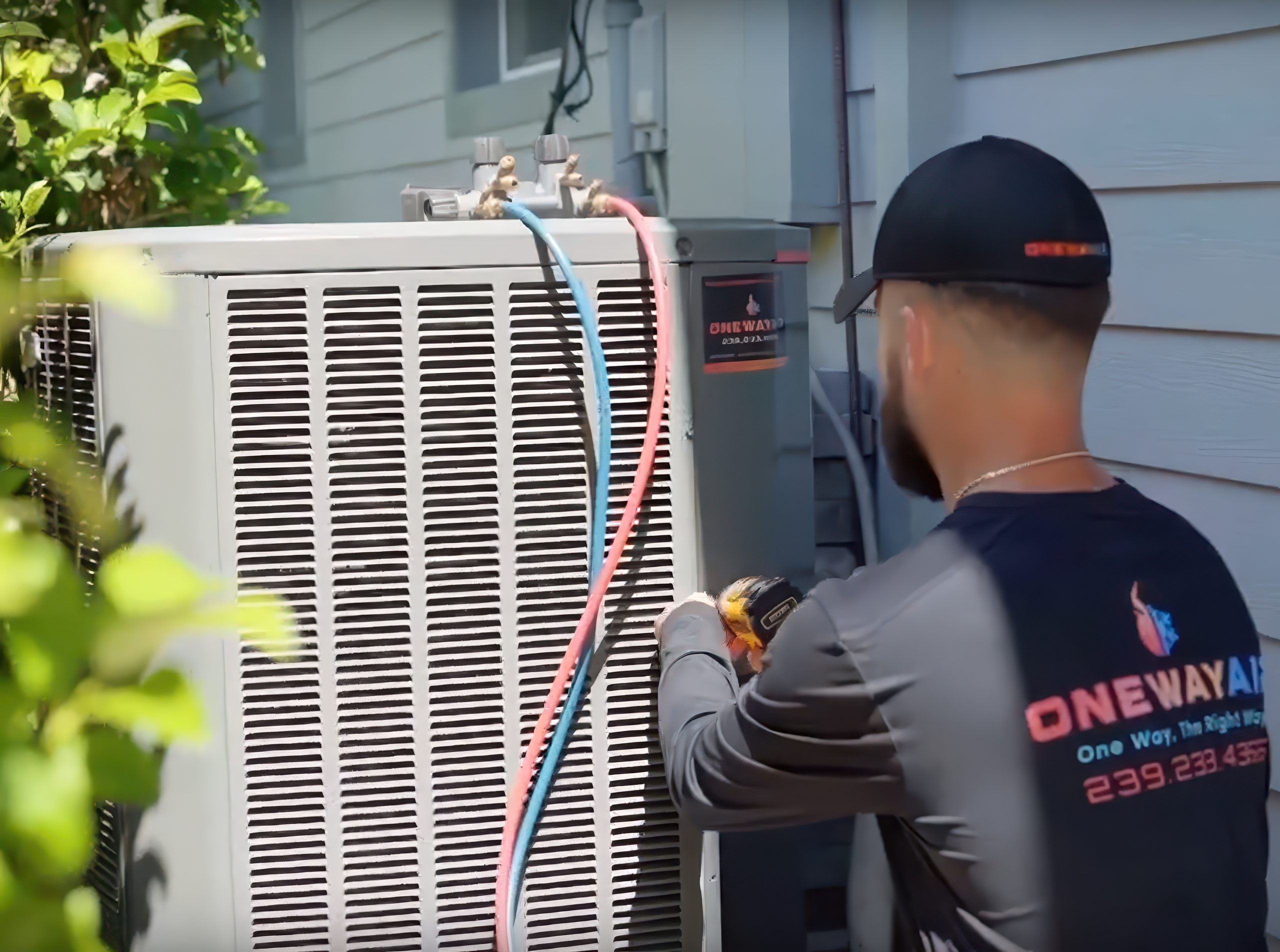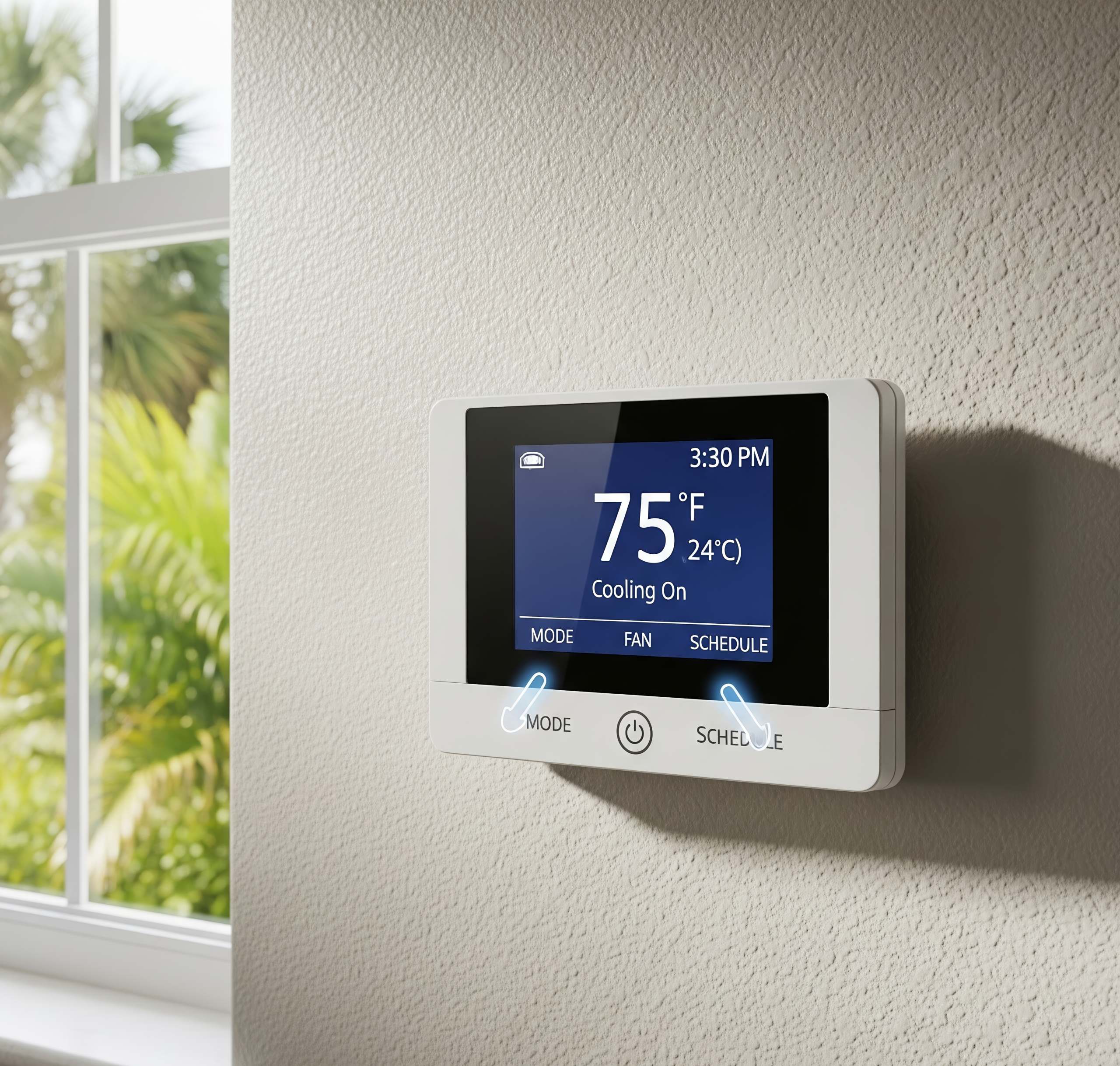7 Simple AC Troubleshooting Steps
Whether your air conditioning is a central or split system, AC involves complex mechanics and electrical work. So, the idea of DIY troubleshooting problems with your system might sound like asking for trouble.
Most people will call an HVAC professional as soon as they sense any issue with their air conditioning — and that’s the right thing to do if you don’t know one end of a screwdriver from the other.
But for the more adventurous home enthusiasts, a few simple AC troubleshooting steps can at least diagnose a problem — even if you can’t fix it.
Some things are so simple that you may be able to prevent an emergency call to an HVAC repair professional, saving you time, money and frustration in the Florida heat. For instance, you probably don’t need a professional to change the batteries in a thermostat or flick a switch on the electric panel!
If in doubt, make the call but you might like to tick off these common AC troubleshooting steps first…
For anything more complex than this, you’ll need to call an HVAC professional as soon as you can because you don’t want a malfunctioning or inefficient AC system at any time of the year in Florida.
1. Check the thermostat
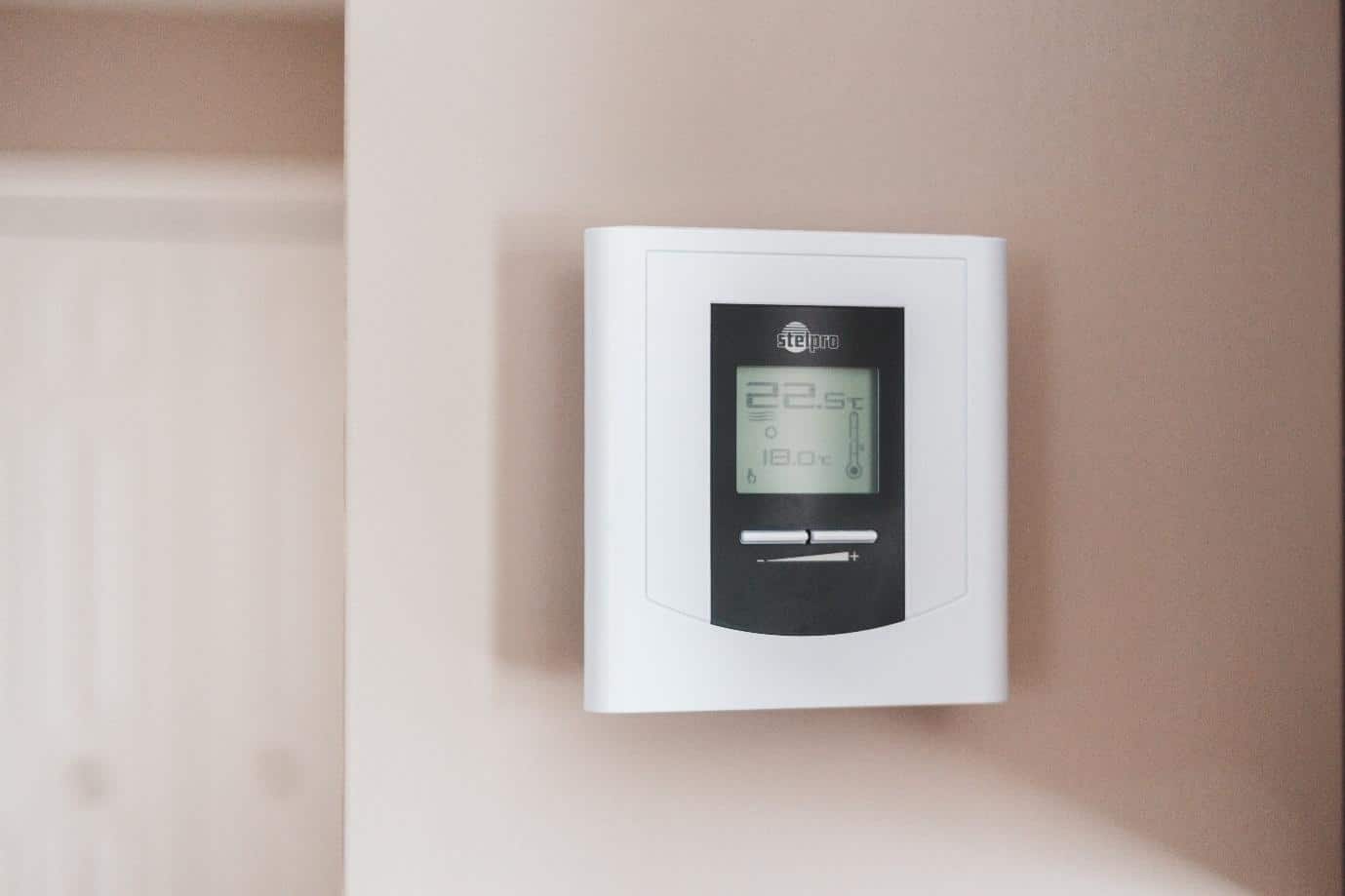
It’s surprising how many problems start with a simple air conditioning thermostat.
The thermostat allows you to set the desired temperature in the home — and smart thermostats, which are common in modern HVAC systems, are WiFi-enabled and can be controlled with a phone, tablet or another connected device.
Has the thermostat been set correctly or has someone messed around with it without knowing what they’re doing and set the incorrect temperature?
Some people forget to change the setting as the seasons change. With traditional thermostats, they can be accidentally adjusted to a different temperature than the one desired. You need to rule out this before moving on.
If the thermostat’s display is dark, a lack of power may be the issue. Try replacing the batteries or check for a blown fuse or tripped circuit breaker in the electric panel (see step three).
If the thermostat is set correctly but the temperature of the home is not reaching the desired level, the thermostat could be faulty (you might need a new thermostat, which is usually a professional job) or the thermostat might not be to blame at all.
STAY COOL ALL YEAR ROUND WITH ONE WAY AIR…
The team at One Way Air installs, services, and repairs all types of air conditioning systems in Southwest Florida. Get in touch with us here for a quote or call 239-233-4356 in emergencies.
2. Check doors and windows
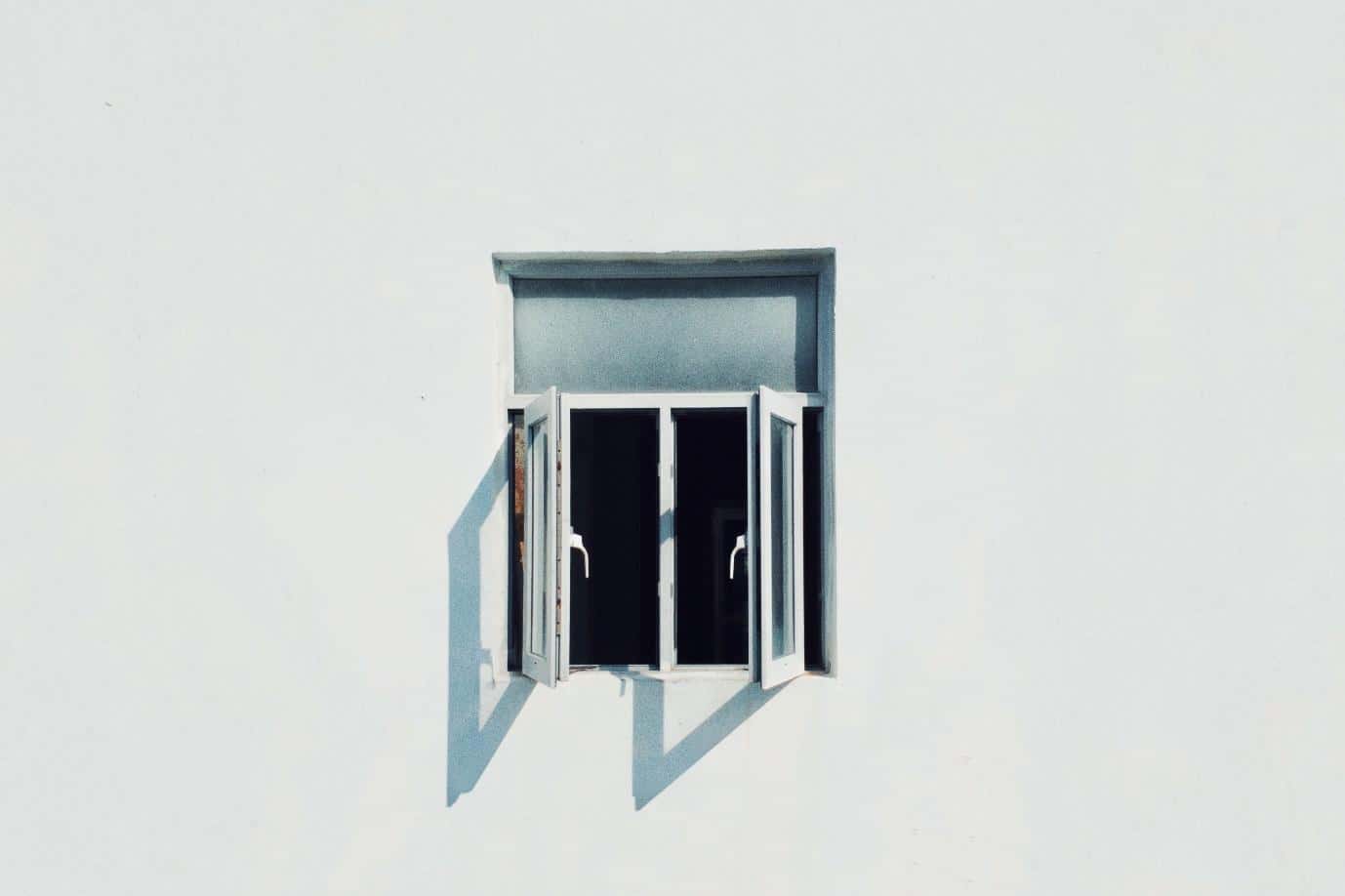
Another surprisingly common problem is not the air conditioning system itself but the home environment in which it’s installed.
If the installed AC system is not powerful enough, that’s one problem — and it may eventually need an HVAC professional to install a different system — but a few simple AC troubleshooting steps can improve the situation until you decide to do that.
For instance, educate the people in the household about keeping windows and doors shut when the AC is on (yes, we’ve been to plenty of houses where doors and windows are open with the AC on full blast!)
A misused AC system will work too hard, may struggle to cool rooms efficiently and will, ultimately, increase monthly electric bills and shorten the life of your system — none of which you want.
If the AC system wasn’t installed professionally, it may not be fit for purpose. Some houses have different cooling requirements based on how much sunshine they get, how well-insulated the doors and windows are and other environmental factors. This should have been properly assessed before AC installation.
Troubleshoot the steps as described here and if it doesn’t fix the problem, you may need another assessment by an HVAC professional.
3. Check for a blown fuse or tripped circuit breaker
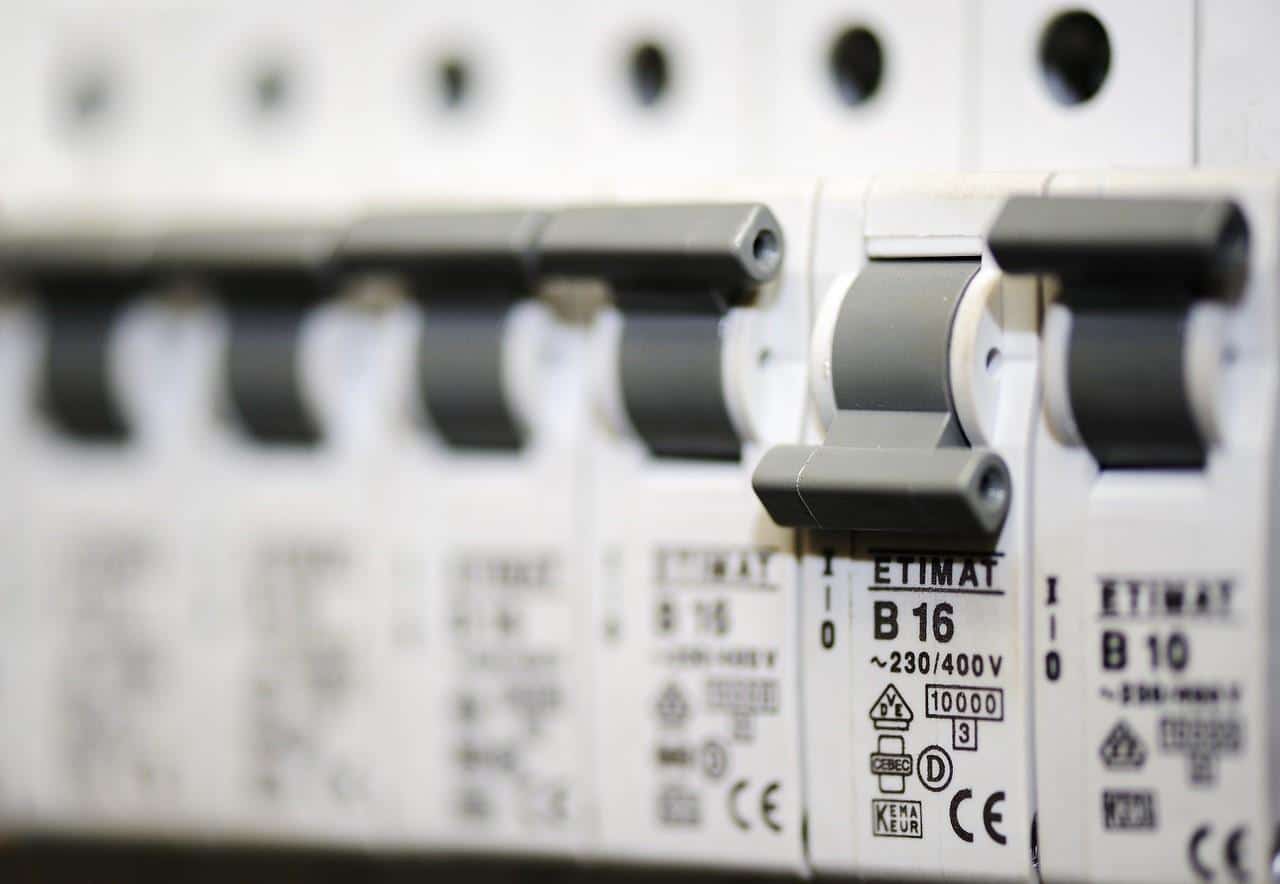
First, a reminder that before you troubleshoot anything electrical beyond the initial power checks, turn off the power at the breaker.
If your AC won’t turn on at all, it could be a thermostat power problem (as described in the first point above) or a problem with the power to the unit.
Sometimes, for instance, circuit breakers are tripped due to overloading. It should be relatively simple to check the electrical panel. Turn all the circuit breakers off and on again. Wait a few minutes and try turning on the AC again to see if it works.
If not, check that the fuse doesn’t need replacing — they often blow. If this happens, it may be a sign of a failing part inside the unit. Simply replacing the fuse may not solve the problem but may be a temporary fix that can last until an HVAC professional takes a look.
To check the fuse, get your hand on a multimeter and follow these simple steps:
- Set a multimeter to the lowest Ohms scale.
- Touch the red and black leads to opposite ends of each fuse.
- If there is a numerical reading, the fuse is OK.
- A zero, minus symbol or infinity symbol (∞) indicates a blown fuse.
Beyond this, homeowners should beware of DIY AC repairs that involve tampering with the electrics — it’s best to call a licensed professional or electrician.
4. Clean or replace the air filters
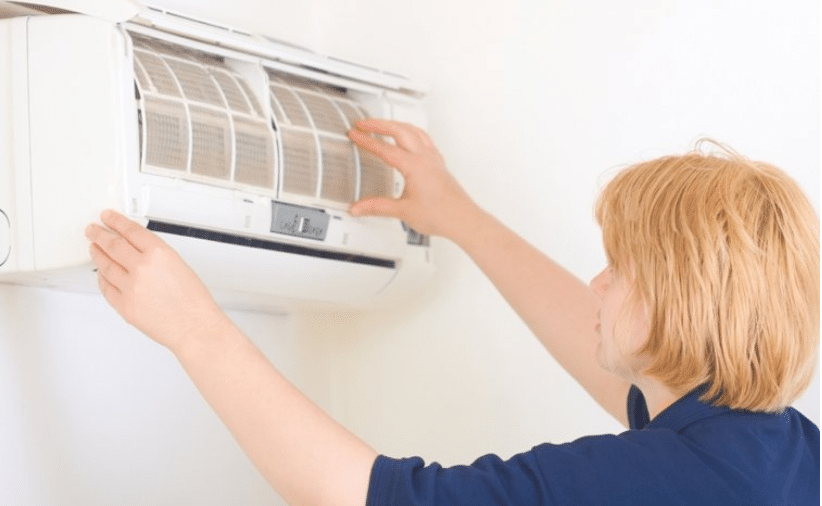
If your AC is working but not blowing out cool air — or not enough cool air — it could be for a variety of reasons.
A common, easy-to-fix reason is that the air filters are dirty. If you don’t know what the air filter is or where it is located in your AC system, it’s unlikely you’ve ever cleaned one!
Now might be the time to find out what you need to do. Air filters need regular cleaning and changing. Ideally, replace filters every couple of months or even more frequently in the summer. They are freely available in major hardware or home improvement stores.
Dirt, dust, and pet dander build up in the filters and obstruct the flow of cool air, clogging up the system and making it less efficient, using more power than necessary and potentially shortening its life.
You can see what air filters in split systems usually look like from the above image. If you have a central air conditioning system., it may be located in one of several locations in your main HVAC unit:
- In front of the fan on the unit
- In duct openings (especially older systems)
- In or behind the return air grill opening
- Between the return duct and the air handler
Cleaning filters is easy. Turn off the AC, remove the filter and carefully use a vacuum cleaner to clear any excess fluff and dander, then a damp rag to wipe off any dust and dirt. Then replace it once it’s dry.
5. Open and clear the air vents
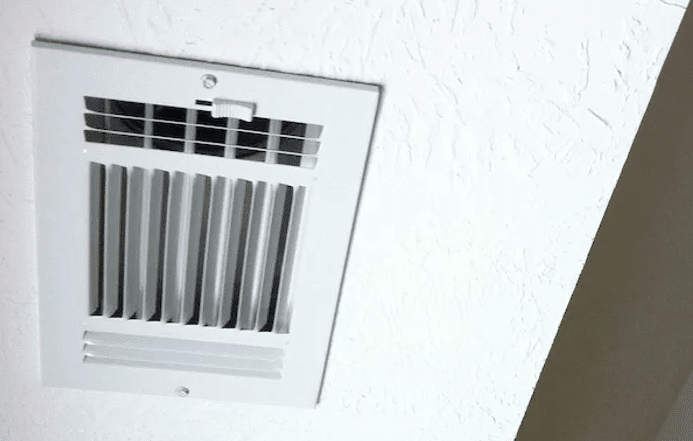
Central air conditioning systems usually have a series of air vents leading into the rooms that they cool, either in the ceiling, on the floor, under windows or on exterior walls. These are responsible for delivering cool air to each part of the home.
Sometimes, these vents are closed by homeowners on purpose so that rooms that don’t need cooling don’t receive cooled air. This is in the mistaken belief that it will save money on electricity.
It’s a myth that closing off rooms will save energy or that closing vents in unused rooms will lower your energy costs.
In fact, it may cause more harm than good, making the overall system less efficient and causing problems in the ductwork. If air pressure builds up because of closed vents, this can lead to air leaks and mold growth.
It’s best to open all the vents and make sure that they’re not obstructed by items in the room as this can lead to inefficient cooling throughout the home.
6. Check for water leaks

One obvious AC troubleshooting step if you’re experiencing air conditioning problems is checking for leaks. Leaks are sometimes obvious (like the one above) and at other times less so.
If water is visibly leaking out of your AC unit, turn the system off and call an HVAC professional. It requires immediate attention to avoid costly water damage to your home.
Often, such leaks are due to a drain line becoming clogged and backing water up into your home. While this is a simple-to-fix problem for an AC professional, it is a concerning and troublesome problem for a homeowner.
You can try troubleshooting this AC problem with a wet/dry vacuum. If that stops the water leak, great! If not leave it to a professional as it may require a more complex repair job or a replacement part to be installed.
Sometimes, the evaporator coil becomes frozen over — yes, even in the Florida heat, that can happen!
If the air filter is dirty or insufficient airflow blows over the coils, the lack of warm air can mean that they get too cold and ice forms — leading to leaks. Water may also leak from old piping.
If warmer air than usual blows, it could be due to a refrigerant leak, which is another type of AC problem requiring professional attention.
7. Clear around the condenser unit
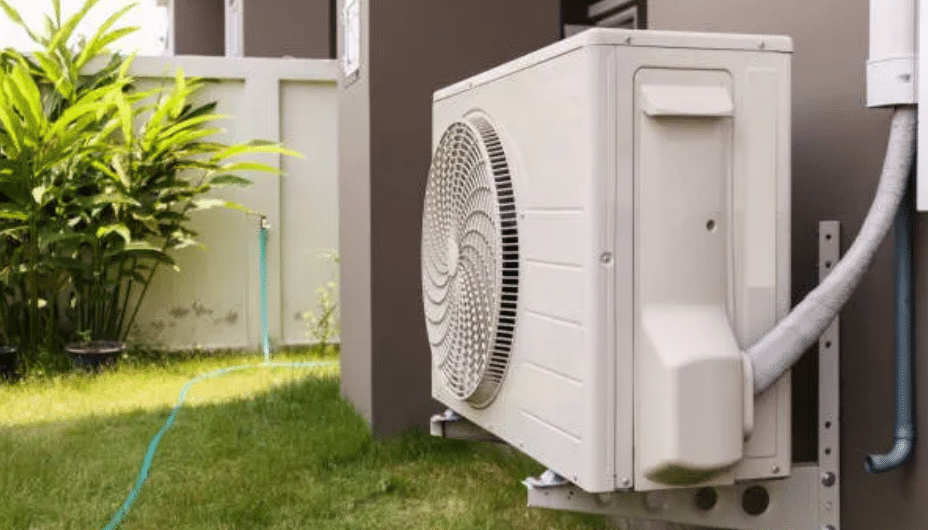
Split or central air conditioning systems utilize condenser units located outside of the buildings that they cool.
These contain many of the essential mechanical parts that drive the AC system. These parts are encased in durable, weatherproof casing but care must be taken to ensure that no obstructions, such as weeds, plants, shrubs or other greenery get entangled in the unit and interfere with the workings of the system.
Cut the grass and prune trees around the unit. You can also spray it down with a hose from time to time. Make sure any large objects are at least two feet away from the unit to avoid obstructing airflow. Otherwise, inefficiencies and higher energy bills may result.
For more adventurous DIYers, cleaning the AC condenser unit is another manageable air conditioning maintenance task. With the power off, simply use a garden hose with the nozzle aimed at the condenser coil to remove dirt that has built up under the lid and on the coil fins.
Which AC troubleshooting issues do you need an HVAC professional for?
Safety comes first with any AC repairs. At the very least, if you attempt any AC troubleshooting yourself, you’ll need a voltage detector, multimeter, insulated screwdrivers and socket set.
Don’t attempt to fix AC problems if there are any doubts. Call a licensed HVAC repair professional.
A licensed technician will have the know-how and correct equipment to identify what the issues are, recommend the best fix for your circumstances and carry out the work required to get your AC back up and running at peak performance (or replace it).
Following are some common AC troubleshooting issues that you’ll need a professional for:
- Checking refrigerant levels: a lack of refrigerant may be responsible for the AC system not cooling your home enough. If refrigerant is low, it means that heat and humidity are not pulled out of the air effectively. If the refrigerant is leaking, it will need to be addressed by a professional.
- Duct cleaning: you’ll need to clean the AC system ducts at least once a year and have them checked for leaks or clogging, which can cause system malfunctions and inefficiencies. Mold can be a problem in humid climates like Florida and if it is blocking ducts, you may see dust blowing out of vents, smell something musty and/or the air may be cooled unevenly in your home.
- Short cycling: if your AC unit is constantly turning on and off and not completing a full cooling cycle, it may cause damage to the compressor so it will need professional attention. If the problem is not solved by unclogging air filters or checking the thermostat, you’ll likely need a professional to investigate to ensure that the AC system you’re using is appropriate for your home.
- Replacement parts: the most common parts that need replacing in air conditioning systems are usually the Start/Run capacitors (which store electricity and release it during compressor and condenser fan startup) and the AC contactor (which is a mechanical relay that allows the AC system to use both low-voltage power and high-amperage current).
- Frozen system: if you have ice around your condenser coils, it could be something as simple as dirty air filters or an obstructed condenser unit but other potential obstructions may be causing the issue and an HVAC professional may have to check the blower fan or ducts.Weird sounds or smells: strange, musty odors may indicate a mold problem while burning smells can be from electrical wiring issues or overheating and the unit should be turned off immediately. Strange sounds like excessive humming, whistles, squealing, banging or hissing also need professional investigation.
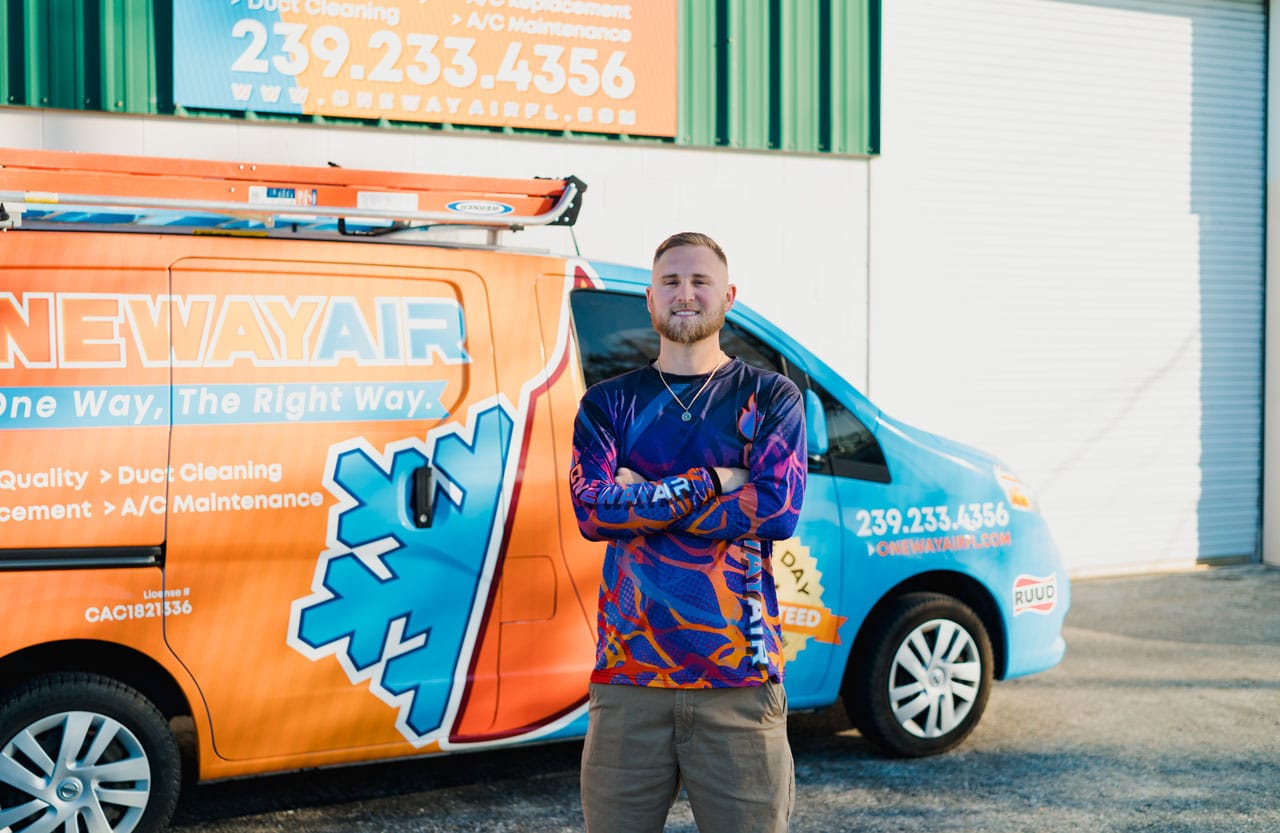
Many of the most common air conditioning troubleshooting issues can be averted with a regular AC tune-up or maintenance program. This should be high on the list of every Florida homeowner — twice per year is recommended.
Inspections of all the typical AC issues are covered by comprehensive tune-ups.
Schedule AC troubleshooting or a tune-up in Fort Myers
Regular AC maintenance checks help prevent problems, inefficiencies and spiraling energy costs.
Scheduling an AC tune-up toward the end of spring and again in the fall should ensure you minimize any AC issues and maintain optimal performance all year round.
If you’re in Fort Myers or the surrounding areas of SWFL make sure that you troubleshoot any AC issues rapidly with the help of One Way Air. Call us today at 239-233-4356 to discuss your AC troubleshooting needs.

